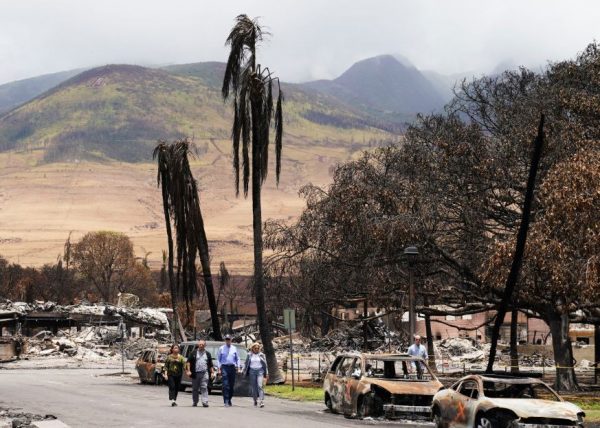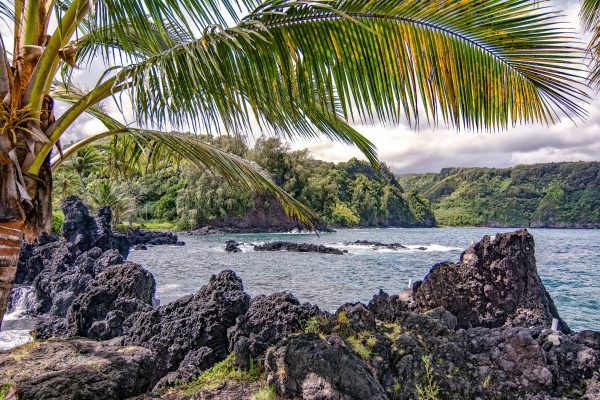A year after a devastating wildfire killed more than 100 people and destroyed the historic town of Lahaina on Maui’s west side, it’s still unclear whether travelers are welcome.
That lingering uncertainty has cost Hawaii Island nearly $1 billion in lost revenue, which has historically relied on tourism for 70 percent of every dollar in its local economy.
Officially, all of Maui except the burn zone in Lahaina has been open for business since November 1. However, it was down 25% year-over-year in the first half of 2024, with 1.1 million viewers compared to nearly 1.5 million in the first half of 2023. Spending also fell, from $3.47 billion in the first half of 2023 to $2.64 billion in the first half of 2024;
Businesses in the western part of the island are particularly affected. Lahaina is the gateway to the region, which includes the iconic resort town of Kaanapali, but there’s only one way to get there. Technically the burn zone represents 3.4 square miles of the island’s total of 727 square miles. But even if they stay in West Coast resort towns untouched by disaster, many travelers don’t want to drive through the burn.
The gradual reopening left many confused about which areas could be visited. Josh Hardgrove, general manager of Kaanapali’s Westin Maui Resort & Spa, told Bloomberg that occupancy is down 30 percent to 40 percent at his $160 million hotel, with others on the west side.
“People still feel guilty about coming to Maui to celebrate in front of workers who lost everything,” Hargrove says. “That’s where we’re stuck right now.”
Even locals, who had previously criticized the tourism industry, now hope for a recovery. Others believe closing the west side is the right decision, to heal the island and begin cleanup efforts, but it’s time to move on.


Best time to visit
The irony is that from a tourist’s point of view, there hasn’t been a better time to travel to Maui in years. The beaches are quiet, the island resorts are pristine, and the businesses have never been more appreciative of tourists.
State and federal programs to house evacuees in hotel rooms have ended, and the government is now finalizing the process of moving the remaining families out of hotels and into long-term housing.
Although hotels were not discounted as a result of the fire, the average daily rate in June was $563, $100 more per night than on any other island in Hawaii, and guests can find offers such as a third night free or a future stay.
Nearly a dozen hotels have used it to complete renovations and improvements since the fire. Resorts are highlighting volunteer opportunities and hosting pop-up events to make it easy for guests to support local businesses affected by the fires.
There are challenges
It’s not just low demand that’s crushing businesses: It’s also a labor shortage, exacerbated by rising housing costs after the fires. For waiters, taxi drivers and other tourism-related jobs, moving to the mainland in search of steady work and affordable housing has sometimes proven easier than continuing to wait on Maui.
The biggest problem is misinformation and it keeps people from visiting
A new legislature regulating short-term rentals could help, and Maui Mayor Richard Pisen has proposals to get rid of more than 7,000 vacation units — more than half the island’s stock — and turn them back to locals by January 2026.


Ambiguous messages
The biggest problem is misinformation and it keeps people from visiting. Some mistakenly believe that the entire island burned.
Seeing a city engulfed in flames is a difficult image to erase from a tourist’s mind. While West Maui began reopening on Oct. 8, official news remained murky about which areas were off-limits.
Messages, by contrast, are complex. In June, the Hawaii Tourism Commission issued a statement saying Lahaina was closed to the public, with every address on the west side of the island sharing a zip code with Lahaina. He renewed the announcement a week later, but not before causing chaos that crushed West Side businesses.
What is clear is that much has changed on the ground in the weeks following the disaster, when emotions ran high and tourists faced difficult moral choices. But messages traveling longer distances did not make the same progress.
Source: OT